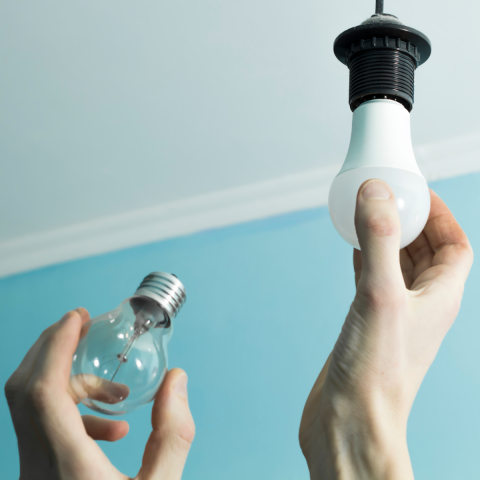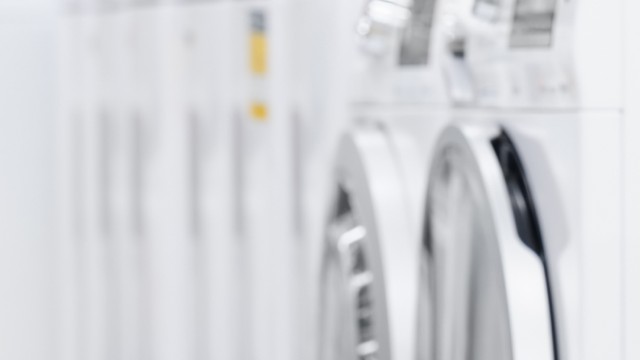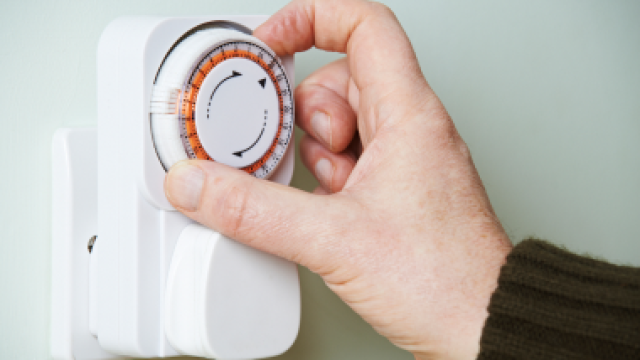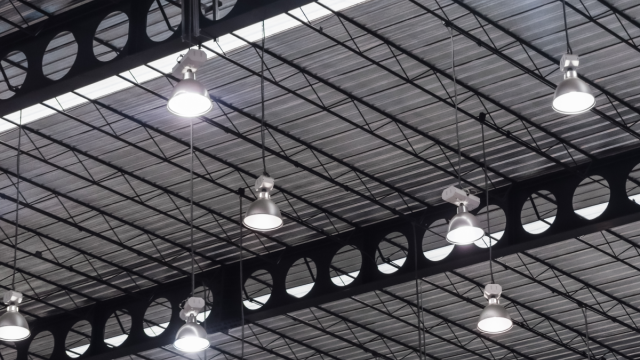
Significant power savings with LED lighting
A fast way to achieve power savings is to switch to LED lights. Until recently, people often ignored this option due to its relative expense. But falling prices have made LED bulbs far more affordable. Another major benefit is that LED bulbs typically use 90–95% less energy than incandescent bulbs — and they can last for between 10 and 20 years!
When you’re buying LED lights, look for New Zealand certified LEDs and be cautious of any that look like cheap knock-offs. Poor quality bulbs are unlikely to deliver the full benefits of LED lighting.
Unlike compact fluorescent light bulbs (CFLs), LEDs are free of toxins like mercury. They pose less of a fire risk than traditional bulbs because they give off very little heat — they’re less power hungry.
LEDs are also remarkably versatile. Many can be dimmed, and they’re efficient when it comes to producing different colours. You can also switch them on or off quickly, without the bulb ‘popping’. And they power up instantly, unlike CFLs.
Consumer NZ reports that LED replacements for standard bulbs result in substantial savings, with standard bulbs costing five times as much to run as their LED replacement.
The task lighting approach
Task lighting means focused, directed light, only when and where it’s necessary. It can apply to kitchen counters, desk lamps, reading lamps, cubicles and bathrooms. And it’s best to use low-wattage, ambient light to maximise cost-efficiency.
Task lighting reduces glare on things like tablet screens, computer monitors and television screens. At the same time it creates an intimate, warm and productive atmosphere.
The authors of Green Lighting — Brian Clark Howard, William J. Brinsky and Seth Leitman — recommend that the task light be to the side (the left side of right-handed people, and visa versa for left handed people) to reduce shadow. Keep the task light out of your eyes, make sure it is adjustable, and keep it directed towards the task.
Lighting according to function
Different rooms serve different functions. None of them need to be completely flooded with light all the time. The bathroom is an example. Task lighting supported by ambient lighting works well.
Lighting designer Randal Whitehead told Forbes magazine about how to light a bathroom
He said that using a pair of lights mounted either side of the mirror at eye level creates a shadowless scenario that’s best for tasks like applying makeup, and shaving. “Proper task lighting at the mirror is important,” he said.
Entrance halls are transitional spaces — moving from dark to light — and they’re not regularly used. Consider low, warm, welcoming light. A kitchen, on the other hand, could use ambient light supplemented with task lighting in alcoves, to create a pleasant and productive atmosphere.
Off-the-wall measures
Consider using any one of the following measures to brighten up a room and save on power use.
- Painting a room in lighter colours will help to reflect more light. You can also save further by supplementing the room with big windows and skylights.
- Other reflective surfaces, like white furnishings, bright cushions, glass tables, bowls and mirrors will help to make a room look bigger and brighter.
- Re-arranging or reducing furniture can clear up space and improve flow. This also helps to eliminate shadows and dark corners.
- Lighting up a feature point, like a table, or putting LED strip lighting onto shelves, can add ambience and mood to a room and reduce power use.
Keen to save even more power?

Tips on shopping for new appliances that use less power to help you save
How you use appliances, and how you maintain their condition, are key factors in controlling your energy use.

Timers and sensors
Low cost and relatively easy to install, timers and sensors control lighting and electricity when rooms and appliances aren’t being used.

Energy efficiency for businesses
Spend less, and tread lighter on the environment. Here’s a bunch of practical tips and tools to make it happen.